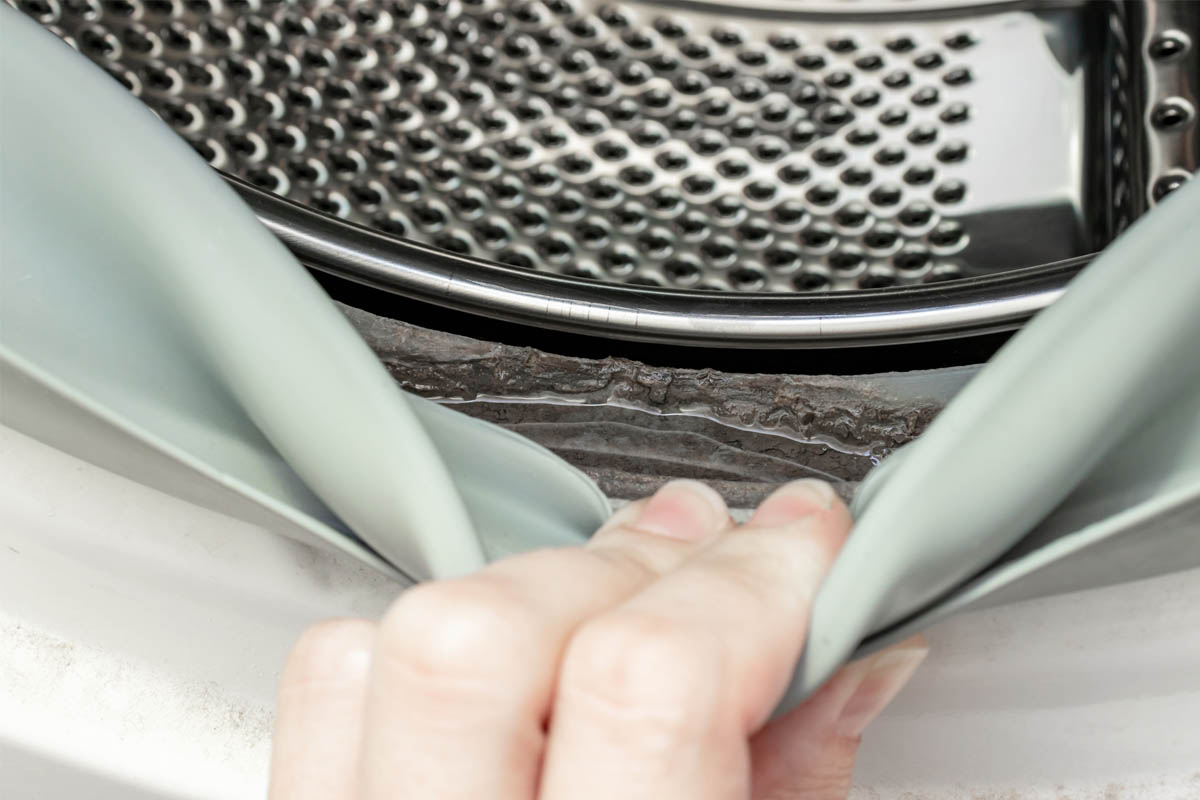

We may earn revenue from the products available on this page and participate in affiliate programs. Learn More ›
Keeping a washing machine clean is essential for the health of both the appliance and your family. Mold can cause staining, and trigger allergies or asthma. If there’s mold in the washing machine’s rubber gasket, it can even cause the gasket to degrade prematurely. Treating your moldy washing machine doesn’t just include the appliance’s interior, either; you should also look around and behind the washer where black mold may take root due to the dark, damp environment.
There are many parts of a washing machine that are prone to molding, and learning how to clean the mold in the washing machine is simple. Use this guide to discover easy fixes you can use to get rid of mold in a washing machine.
Is Mold Harmful to a Washing Machine?
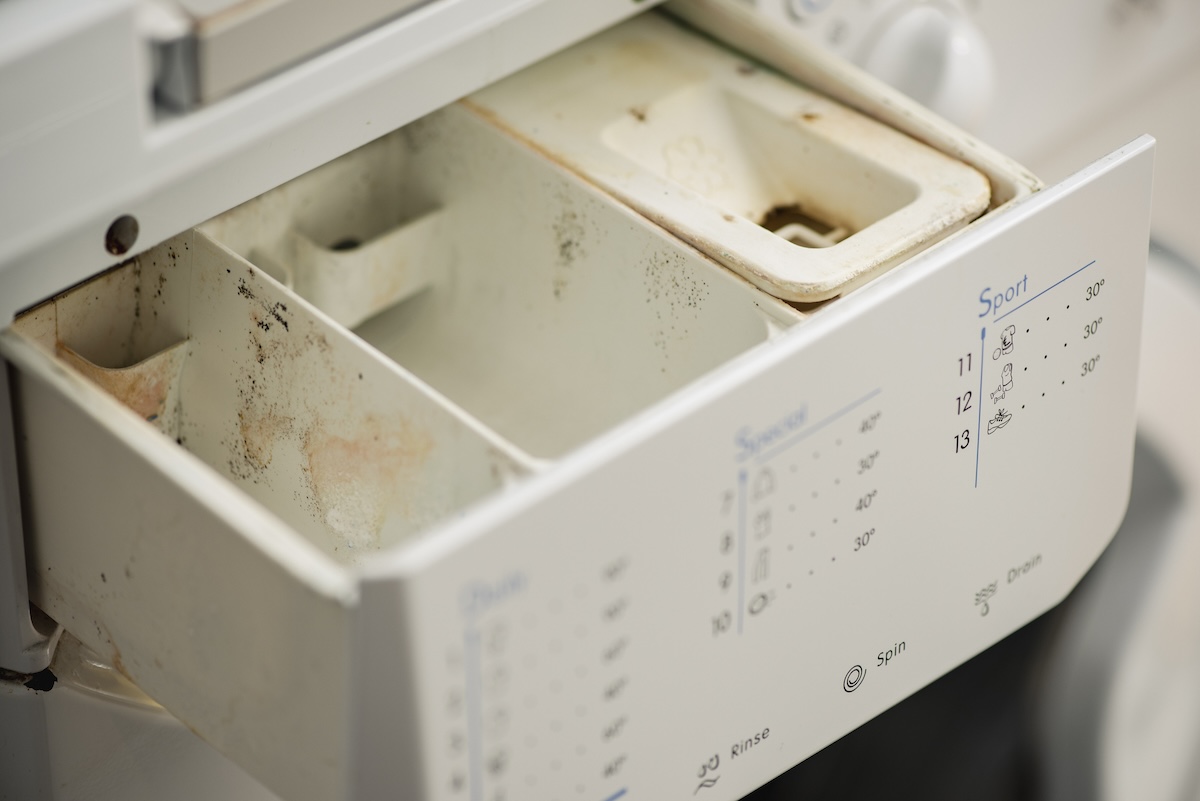
Mold in a washing machine can cause issues for the appliance, the laundry, and your personal health. Mold produces allergens, irritants, and in rare cases, potentially toxic substances, like mycotoxins, so inhaling or touching mold and mold spores can cause symptoms, including sneezing, runny nose, red eyes, and skin rash, according to the EPA.
Dennis Godynuk, lead appliance expert at Nashville, Tennessee-based Comfort Appliance Repair, explains that “mold can trigger allergies and asthma, and it may stain or smell up freshly washed clothes. Left unchecked, it can degrade the rubber seal, leading to leaks or even costly gasket replacements. In humid climates, I’ve seen entire door seals go bad from mold damage, so nip it in the bud as soon as you spot it.” With this in mind, it’s essential to get rid of mold in a washing machine before it can cause problems.
Tools & Materials
Bobvila.com may earn a commission from purchases made through these links.
How to Get Rid of Mold in Your Washing Machine
Step 1: Completely empty the washer.
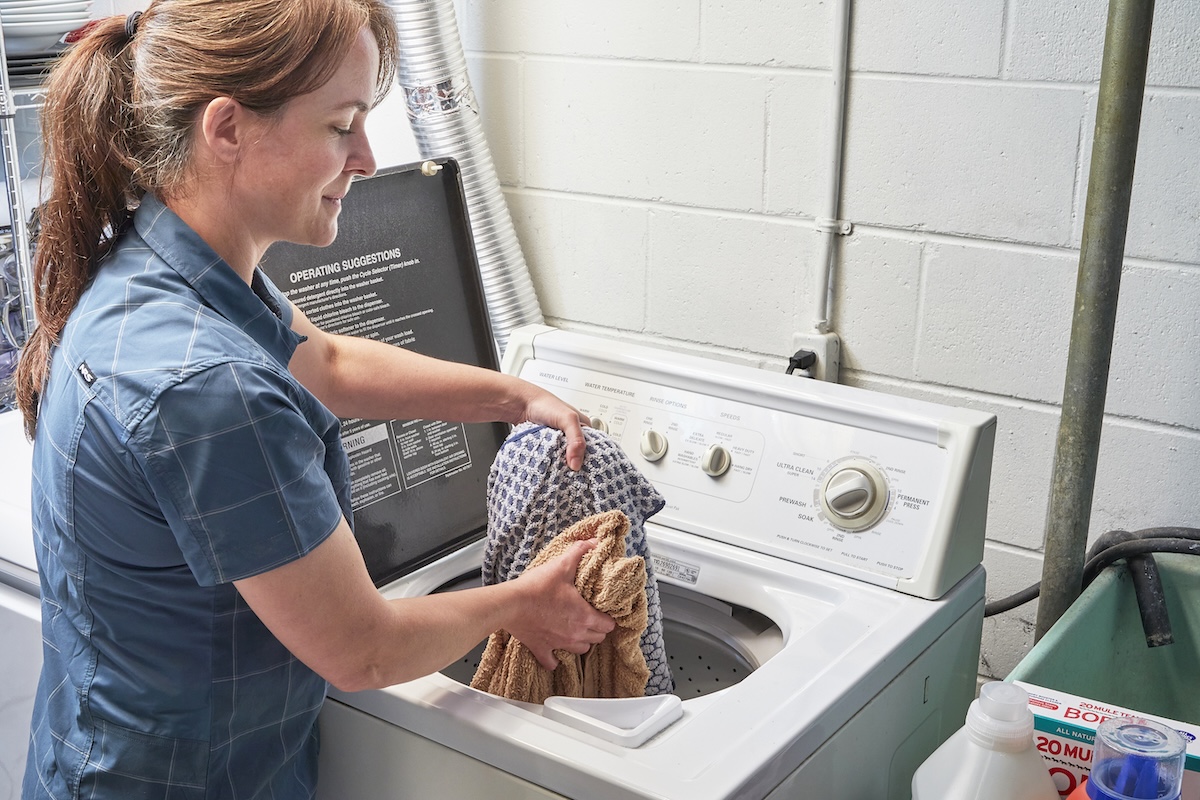
The first thing you need to do when learning how to get mold out of a washing machine is to remove any clothing, towels, or other laundry from the washing machine so that it doesn’t accidentally get bleached. Before cleaning the washing machine, you should also empty the dispenser drawers and clean out the lint trap so you are working with a completely empty appliance.
Step 2: Add bleach and run a cleaning cycle.
One of the best washing machine cleaners to handle mold is chlorine bleach. While you can use an alternate cleaners, like vinegar or hydrogen peroxide, Godynuk states that you should “never mix bleach with vinegar or hydrogen peroxide since that combo creates toxic fumes.” Pour your selected cleaning solution into the bleach dispenser drawer in your washing machine, filling it up to the max fill line, then set the washer to run a cleaning cycle.
If your washer does not have a specific cleaning cycle, simply set the washer to the hottest water temperature and run a normal cleaning cycle. You can even add an extra rinse cycle to help flush out any bacteria and remove bleach residue.
Step 3: Wipe washing machine parts down with a bleach mixture.
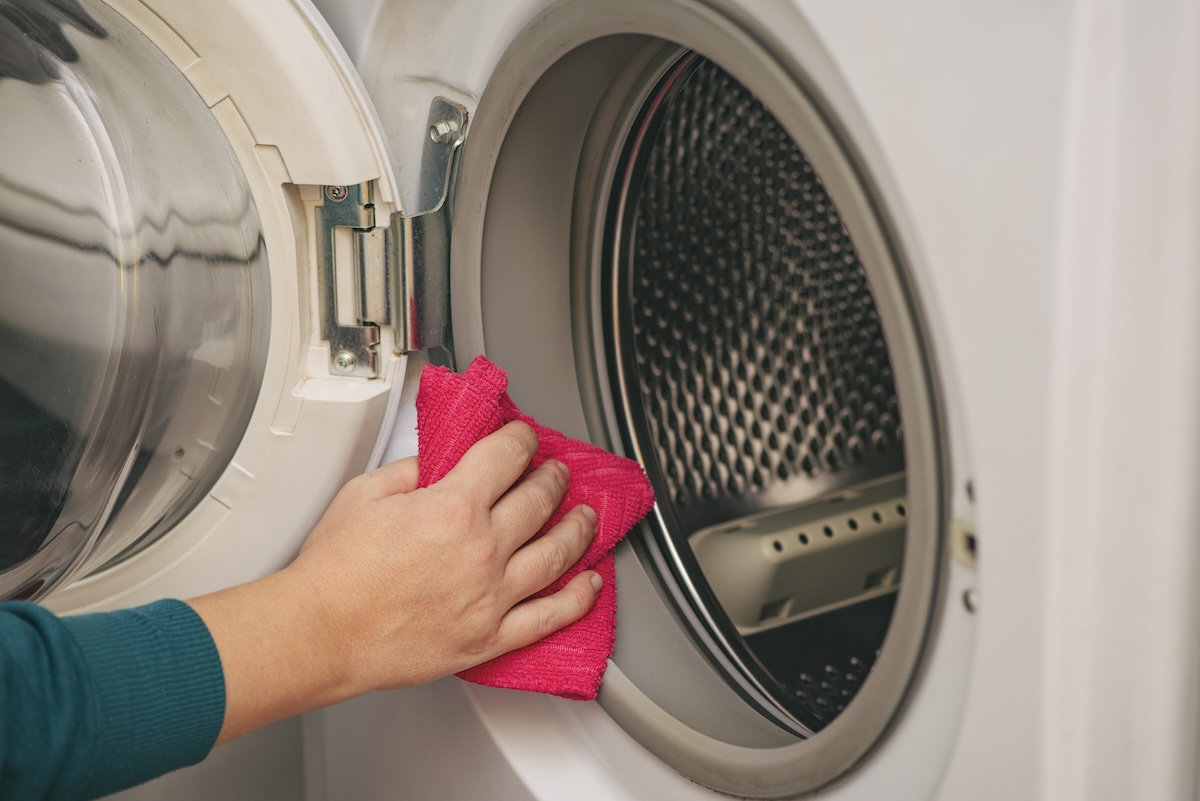
After running the cleaning cycle, clean the other components of the washing machine to prevent mold from hiding out of sight. These hidden areas are often the source of foul washing machine smells because they are regularly forgotten during regular cleaning. Use a microfiber cloth and a spray bottle filled with a bleach solution (try a 1:16 bleach-to-water ratio), to wipe down and sanitize the following parts:
- Drum
- Door seal
- Lint trap
- Tub gasket
- Door
Step 4: Clean the dispenser drawer.
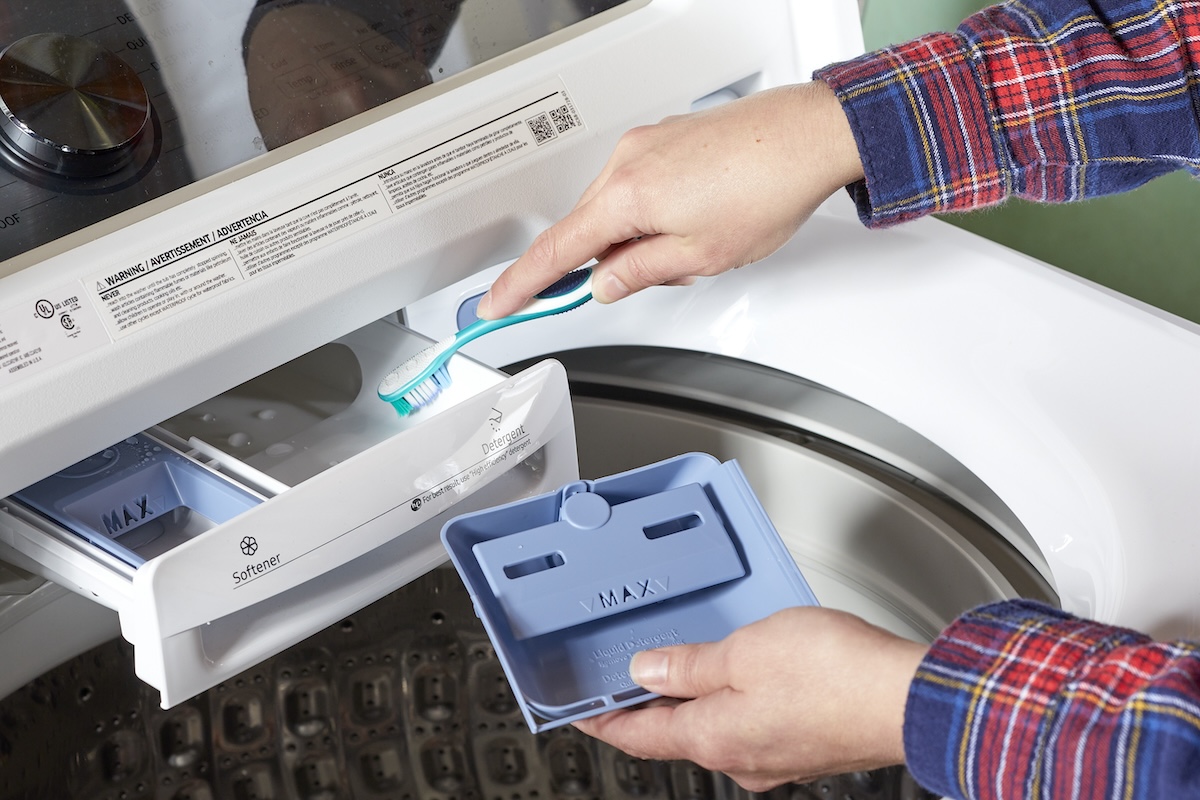
Whether you are dealing with new mold, old mold, or stains from previous mold problems, it’s a good idea to remove the soap, bleach, and softener dispensers to thoroughly clean them with the bleach solution. These dispensers can hold just enough product residue and stagnant water to make them a prime area for mold growth. After removing them, clean them with a scrub brush (or even an old toothbrush) and the bleach solution, then rinse the dispensers with hot water and allow them to dry before putting the dispensers back in the washing machine.
Step 5: Let the machine air dry.
After the washing machine is clean and there are no further signs of black mold or mildew, make sure to give the appliance time to dry. Use a towel to wipe away excess water, then keep the door of the washing machine open to air it out and reduce the risk of future mold growth.
How to Prevent Mold in the Washing Machine
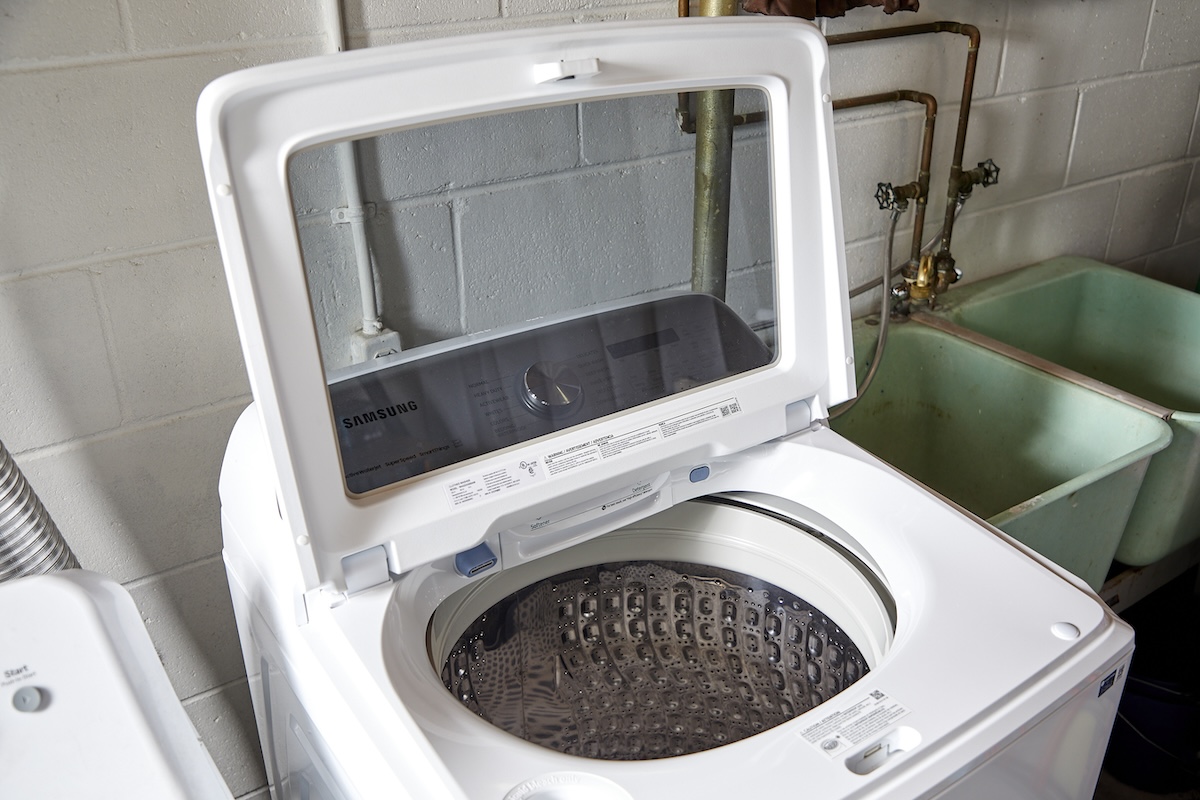
Learning how to clean mold from a washer is important, but ideally you will take steps to prevent mold from appearing in the washing machine in the first place. Godynuk suggests these simple tips to help reduce the risk of mold appearing in any hidden or surprising areas inside the washer.
- Remove clothes from the washer as soon as possible after the cycle completes.
- Skip fabric softener; it leaves a film that traps moisture and encourages mold growth.
- Don’t keep running normal laundry cycles without cleaning; each spin reintroduces moisture and feeds the mold.
- Leave the door and detergent drawer open after each load so everything dries out.
- Use only the recommended amount of high‐efficiency detergent, excess suds mean extra residue.
- Run a ‘tub clean’ cycle every month, or every 30 wash cycles, with a washing machine cleaner.
- Wipe down the rubber gasket and door seal weekly, especially after washing towels or athletic clothes.
FAQ
While there are some differences between mold vs. mildew, both of these contaminants thrive in dark, moisture-rich environments, like washing machines. Godynuk notes that “moisture trapped in the gasket, leftover detergent film, and warm temperatures create a perfect breeding ground.” Additionally, if you overload the drum or use too much fabric softener, you can make the problem worse by limiting airflow and leaving behind a film that encourages mold and mildew growth.
One of the most reliable products for killing mold in the washing machine is chlorine bleach. This product doesn’t just clean the machine, it also eliminates bacteria, fungi, viruses, and other contaminants, ensuring your washing machine is as clean as possible. You can also opt to use vinegar or hydrogen peroxide to handle mold in a washing machine, but it’s important to note that if you do use chlorine bleach you cannot use vinegar or hydrogen peroxide with the bleach, as these mixtures create highly toxic and potentially volatile reactions.
Most homeowners and DIYers can get rid of washing machine mold without professional help. You simply need to empty the washer, pour chlorine bleach into the bleach dispenser drawer, then run an empty hot cycle to kill the mold. Godynuk suggests you “pull your washer away from the wall, clean behind the washer, then wipe the drum, rubber seal, lint trap, door, tub gasket, and dispenser drawers with a bleach solution.” He adds, “I’ve seen mold hide under the seal where you can’t spot it until it’s out of control.”
